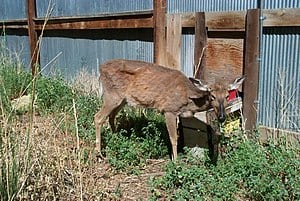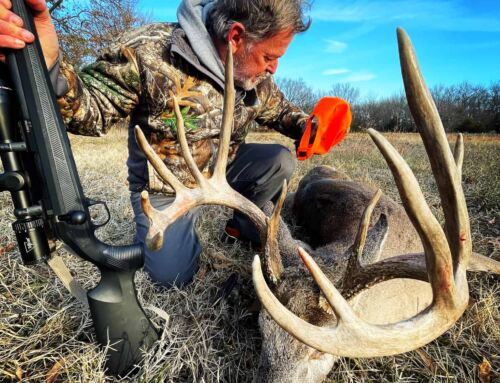The Department of Game and Inland Fisheries (DGIF) in my home state of Virginia has confirmed Chronic Wasting Disease (CWD) in a buck legally harvested in Culpeper County during the November 2018 rut.
CWD has been documented in northwest Virginia (Frederick and Shenandoah counties) for some 9 years, and we hunters in the Northern Piedmont have been holding our collective breath that it would not spread.
But it has. The latest infected buck was killed in Culpeper County, 40 miles south of the original CWD zone.
Officials discovered this CWD from a sample submitted by a local taxidermist in January 2019. At the time this deer was harvested, the hunter did not notice any outward signs of disease, and the buck appeared to be in good condition.
In a press release, DGIF said it is too early to characterize the geographic spread of the disease in Culpeper or to determine how many deer in the area are infected. Because CWD was not confirmed in Culpeper until after the 2018 deer season closed, DGIF did not have the opportunity to work with local hunters to test large numbers of deer from the area.
DGIF will conduct preliminary disease surveillance in Culpeper and surrounding counties this spring and summer to make preliminary assessments about the occurrence of the disease. Methods of sample collection include working with road-kill collection contractors, responding to calls from the public about sick deer, and working with farmers and other landowners who have experienced damage from deer.
Experience in Virginia and other states has shown that it can take several years before the true extent of a CWD “outbreak” becomes clear. That is one of the most troubling aspects of CWD.
The Virginia DGIF is in the process of determining appropriate measures moving forward for Culpeper and surrounding counties, including neighboring Fauquier where I do most of my local deer hunting. These measures may include the delineation of a Disease Management Area, carcass transport restrictions, feeding restrictions, and the like.
I predict there will be changes coming to hunting in our region. The days of loading a deer in a pickup and driving over the county line are likely over (hunters will have to quarter and de-bone the meat).
Currently in summer, we can use mineral sites and bait in front of trail cameras OUTSIDE of hunting season to scout for bucks and monitor herds, but that could change. Virginia already mandates the use of synthetic deer scents, so no change there.
Most certainly hunters will be encouraged to have their deer meat tested for CWD before eating it.
DGIF officials will notify hunters of any changes to the regulations in the area this summer and a public meeting will be scheduled in Culpeper County to address questions and concerns about the Department’s planned management approach to CWD in this area.
I would like to give a big shout-out to the Virginia DGIF for their efforts to monitor this disease. Last season, the DGIF worked with 50 taxidermists statewide to enhance Virginia’s CWD surveillance. Participating taxidermists submitted more than 1,600 samples from harvested deer, including the one from Culpeper that tested positive.
ABOUT CWD: This incurable disease has been detected in 26 states and 3 Canadian provinces. It is a slow and progressive neurological disease that ultimately results in death of the deer. The disease-causing agent is spread through the urine, feces, and saliva of infected animals. Noticeable symptoms include staggering, abnormal posture, lowered head, drooling, confusion, and marked weight loss.
There is no conclusive evidence that CWD can be transmitted naturally to humans, livestock, or pets, but the Centers for Disease Control and Prevention instructs hunters to test all deer harvested from known CWD-positive areas and to not consume any animals that test positive for the disease.
For more information about CWD: www.dgif.virginia.gov/wildlife/disease/cwd.







Is there a kit we can get to test the meat ourselves? I process my own deer meat.
No kit for personal field testing, has to be done in a lab with lots of special equipment and a bunch of different steps.
I wonder how long it will be before charities require that all donated venison be tested for CWD before they will accept it?
won’t be long i’d say
DGIF already tests all donated deer from where CWD is.